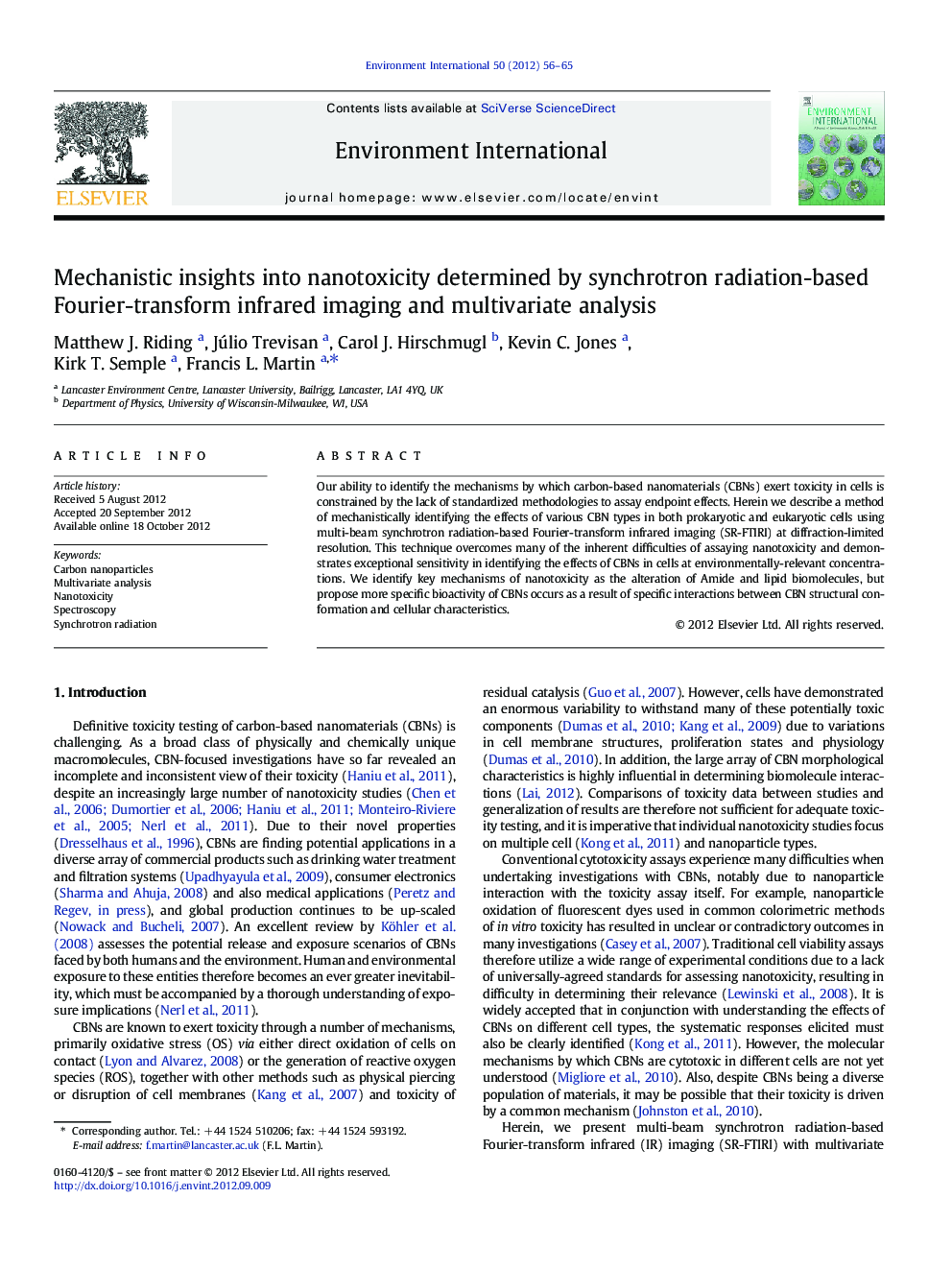| Article ID | Journal | Published Year | Pages | File Type |
|---|---|---|---|---|
| 4422911 | Environment International | 2012 | 10 Pages |
Our ability to identify the mechanisms by which carbon-based nanomaterials (CBNs) exert toxicity in cells is constrained by the lack of standardized methodologies to assay endpoint effects. Herein we describe a method of mechanistically identifying the effects of various CBN types in both prokaryotic and eukaryotic cells using multi-beam synchrotron radiation-based Fourier-transform infrared imaging (SR-FTIRI) at diffraction-limited resolution. This technique overcomes many of the inherent difficulties of assaying nanotoxicity and demonstrates exceptional sensitivity in identifying the effects of CBNs in cells at environmentally-relevant concentrations. We identify key mechanisms of nanotoxicity as the alteration of Amide and lipid biomolecules, but propose more specific bioactivity of CBNs occurs as a result of specific interactions between CBN structural conformation and cellular characteristics.
Graphical abstractFigure optionsDownload full-size imageDownload as PowerPoint slideHighlights► Gram-negative bacteria are more susceptible to nanotoxicity than Gram-positive. ► Amide and lipid biomolecule alterations are consistent mechanisms of nanotoxicity. ► Specific bioactivity is a function of cell and CBN type combinations. ► IR spectroscopy with multivariate analysis is a robust method of assaying nanotoxicity.
